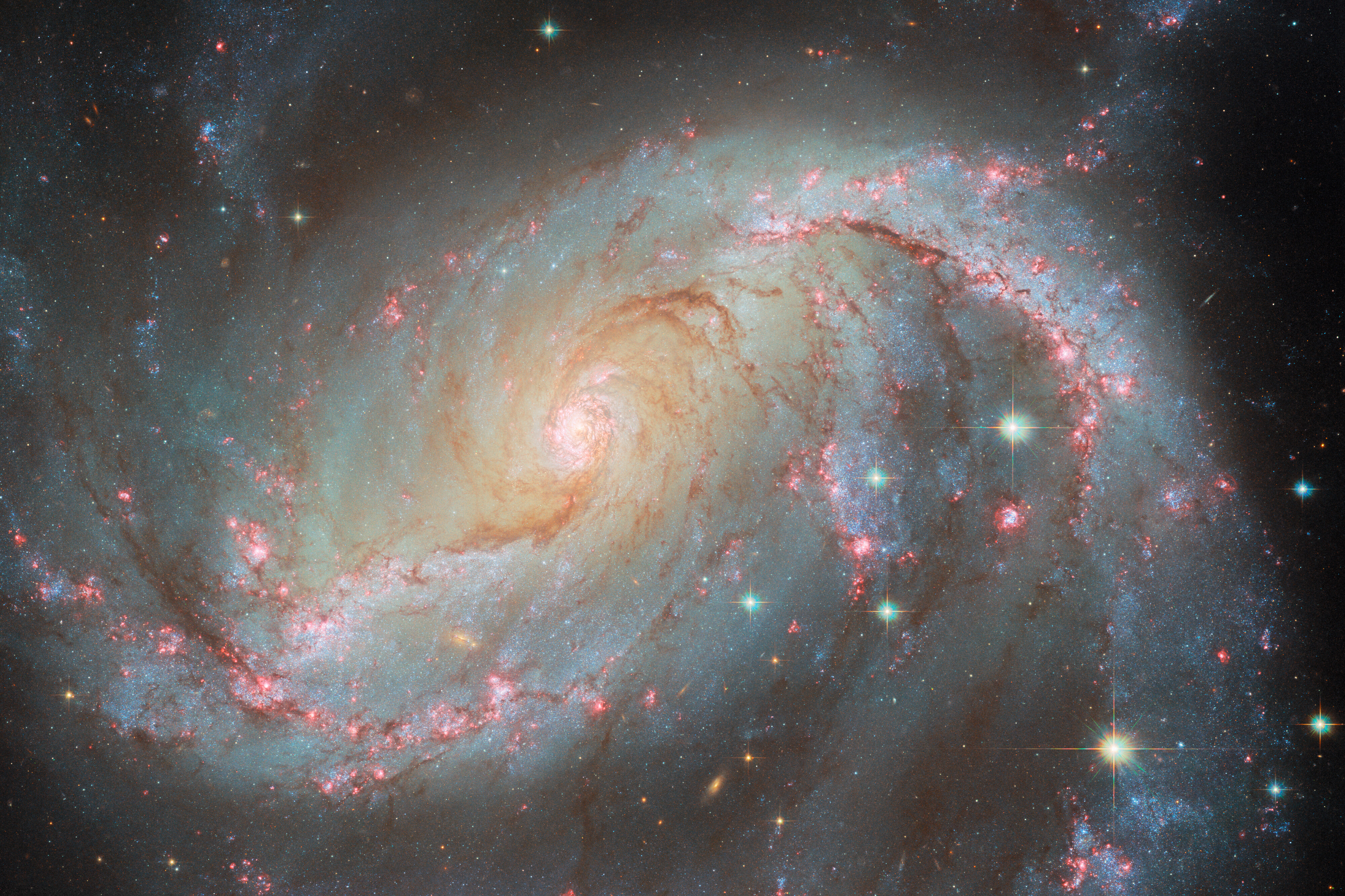
Hubble Captures the Spiral Galaxy NGC 1672 with a Supernova
This NASA/ESA Hubble Space Telescope image features NGC 1672, a barred spiral galaxy located 49 million light-years from Earth in the constellation Dorado. This galaxy is a multi-talented light show, showing off an impressive array of different celestial lights. Like any spiral galaxy, shining stars fill its disk, giving the galaxy a beautiful glow. Along its two large arms, bubbles of hydrogen gas shine in a striking red light fueled by radiation from infant stars shrouded within. Near the galaxy’s center are some particularly spectacular stars embedded within a ring of hot gas. These newly formed and extremely hot stars emit powerful X-rays. Closer in, at the galaxy’s very center, sits an even brighter source of X-rays, an active galactic nucleus. This X-ray powerhouse makes NGC 1672 a Seyfert galaxy. It forms as a result of heated matter swirling in the accretion disk around NGC 1672’s supermassive black hole. Along with its bright young stars and X-ray core, a highlight of this image is the most fleeting and temporary of lights: a supernova, visible in just one of the six Hubble images that make up this composite. Supernova SN 2017GAX was a Type I supernova caused by the core-collapse and subsequent explosion of a giant star that went from invisible to a new light in the sky in just a matter of days. In the image above, the supernova is already fading and is visible as a small green dot just below the crook of the spiral arm on the right side. Astronomers wanted to look for any companion star that the supernova progenitor may have had — something impossible to spot beside a live supernova — so they purposefully captured this image of the fading supernova.
- X

























